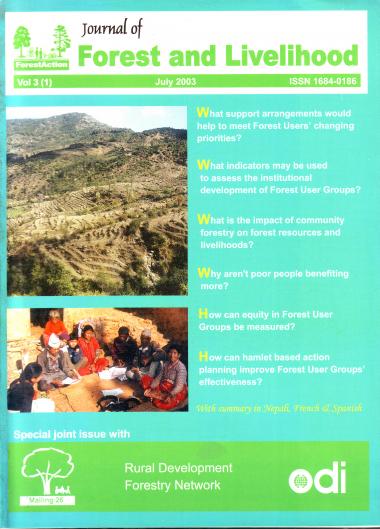Institutional Development of Forest User Groups in Nepal: Processes and Indicators
DOI:
https://doi.org/10.3126/jfl.v3i1.59730Keywords:
institutional development, forest user group in nepal, institutional development of forest user group in nepal, forest user group in nepal processes and indicatorsAbstract
This paper describes an approach to developing and using process indicators of the institutional development of Forest User Groups (FUGs) in Nepal. Assessments of FUGs were carried out with forest users, on the basis of indicators identified by the users themselves. The approach is helpful in distinguishing patterns of development in the institutional diversity of FUGs, and highlighting support
they require. Post-formation support to FUGs is perhaps the most pressing issue of community forestry. So far, it has tended to be oriented to technical forestry and yield-regulation. If community forestry is to genuinely reflect local people’s priorities then there is a need to move towards a more holistic and dynamic approach: including supporting regular self-assessment of FUGs’ changing needs, specific support in conflict management, easier amendment of forest management plans, and ‘entrepreneurial’ support.
Downloads
Downloads
Published
How to Cite
Issue
Section
License

This work is licensed under a Creative Commons Attribution-NonCommercial 4.0 International License.
CC-BY-NC: This license allows reusers to distribute, remix, adapt, and build upon the material in any medium or format for noncommercial purposes only, and only so long as attribution is given to the creator.





